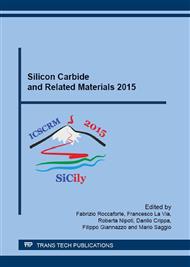p.1137
p.1141
p.1145
p.1149
p.1153
p.1158
p.1165
p.1170
p.1174
Graphene-Silicon Heterojunction Infrared Photodiode at 1.3/1.55 μm
Abstract:
A novel infrared photodiode based on a graphene/n-type silicon heterojunction is explored. The heterojunction photodiode of interest has a large Schottky barrier that results in a low dark current. Graphene serves as the absorbing medium at a wavelength for which silicon is transparent. Under infrared illumination, photo-excited electrons in the graphene gain energy and thus have a greater probability to overcome the barrier and contribute to the photocurrent. We have demonstrated photodiode operation of a graphene/n-Si heterojunction at 1.3 and 1.55 μm wavelength, with 14% internal quantum efficiency and 1.5 pW/Hz1/2 noise-equivalent power, for potential use in silicon photonics.
Info:
Periodical:
Pages:
1153-1157
Citation:
Online since:
May 2016
Authors:
Keywords:
Price:
Сopyright:
© 2016 Trans Tech Publications Ltd. All Rights Reserved
Share:
Citation:


